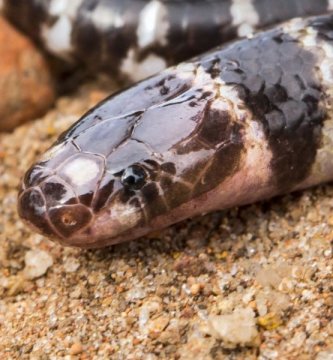[ad_1]
The ink has not yet dried on a scientific paper describing a new species of snake, yet the reptile may already be in danger of extinction due to mining.
A team of biologists led by The University of Queensland’s Associate Professor Bryan Fry discovered a new species of bandy-bandy snake at Weipa on the west coast of the Cape York Peninsula.
Professor Fry said the chance discovery occurred when the team was undertaking sea snake research.
“Bandy-bandies are burrowing snakes, so Freek Vonk from the Naturalis Museum and I were surprised when we found it on a concrete block by the sea, after coming in from a night of sea snake spotting,” Professor Fry said.
“We later discovered that the snake had slithered over from a pile of bauxite rubble waiting to be loaded onto a ship.
“On examination by my student Chantelle Durez, the bandy-bandy turned out to be a new species, visually and genetically distinct from those found on the Australian East coast and parts of the interior.”
The team found another specimen in its natural habitat near Weipa, and another killed by a car close to the mine.
Two more specimens were found in museum collections and a photo was found of another, contributing to a tally of six observations in the same small area.
Professor Fry said he feared the new species could be in trouble.
“Bauxite mining is a major economic activity in the region, and it may be reshaping the environment to the detriment of native plants and animals,” Professor Fry said.
“The importance of such discoveries goes beyond simply documenting what is out there, as venoms are rich sources of compounds that can be used to develop new medications.
“Every species is precious and we need to protect them all, since we can’t predict where the next wonder-drug will come from.
“The discovery of this enigmatic little snake is symptomatic of the much more fundamental problem of how little we know about our biodiversity and how much may be lost before we even discover it.”
Story Source:
Materials provided by University of Queensland. Note: Content may be edited for style and length.
[ad_2]















